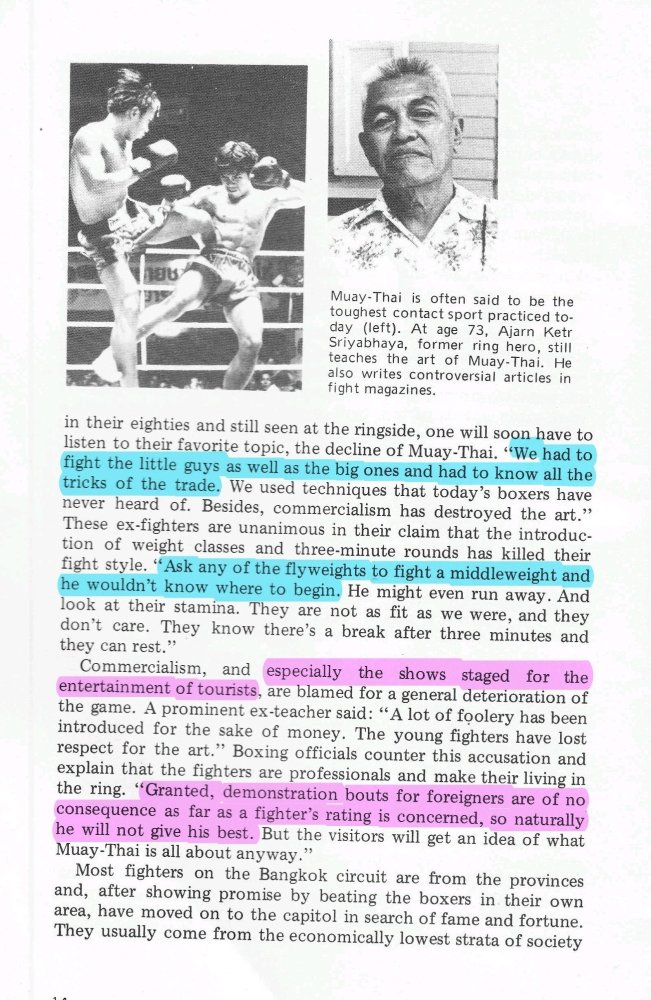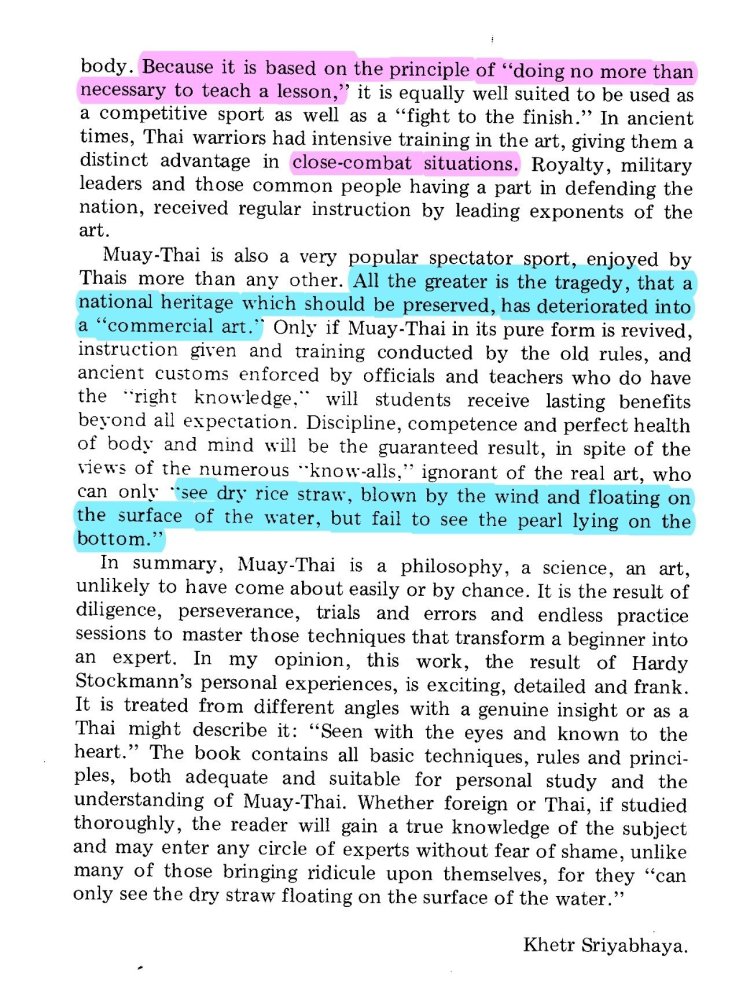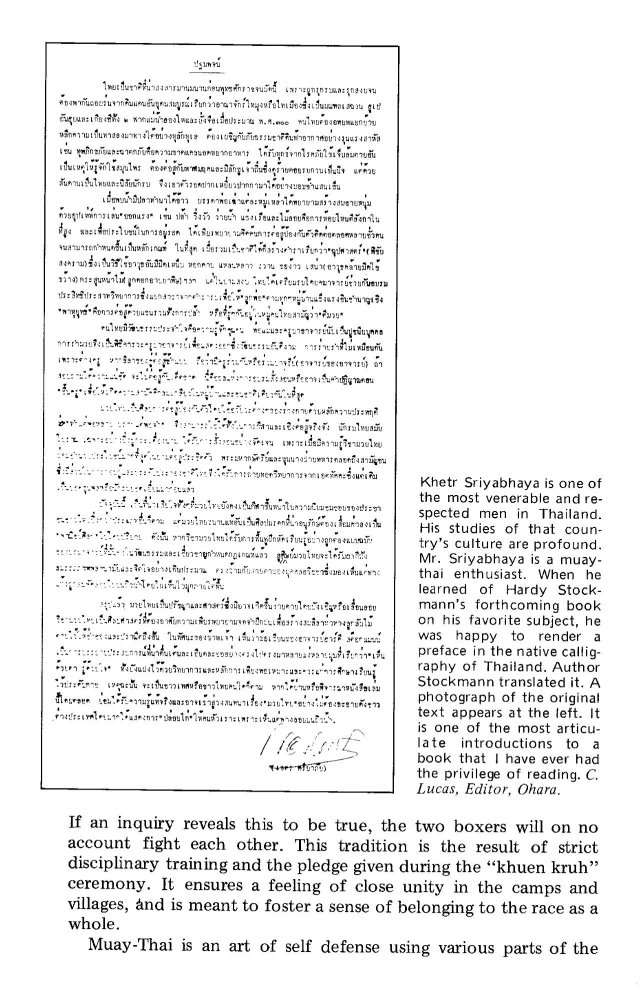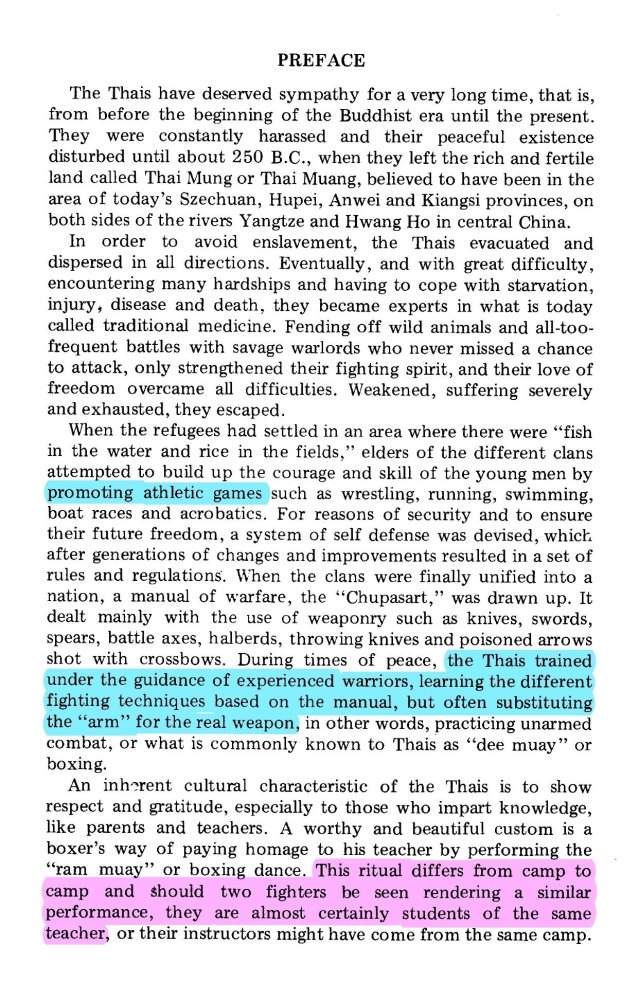Leaderboard
Popular Content
Showing content with the highest reputation on 11/01/2024 in all areas
-
The full pdf of this book on Muay Thai written by an American serviceman is found here (pdf attached linked after this paragraph.). Looking forward to reading through this as its probably one of the first at-length English language accounts of the sport and art, and it perhaps sheds light on the era before the Golden Age of Muay Thai, The Silver Age, and perhaps even gives insight into the history of Muay Thai in Chiangmai (as he is writing it from there), provincial fighting always something that falls through the cracks of history. The author claims in 1975 to having seen thousands of fights. You can follow this thread by email as a forum member. Kick boxing Muay-Thai the Art of Siamese Un-armed Combat by Handy Steadmann - 1976.pdf click on the link above, wait for a minute for it to download.1 point
-
The story of the decline of Muay Thai probably goes back at least a century, if not more, but there are interesting elements to these complaints given in the 1970s by ex-fighters or krus in their 70 and 80s. This would put their memory all the way back to the modernization of Muay Thai in the 1920s, as King Vajiravudh reformed the sport modeling at least the Bangkok version on British Boxing (as he was educated in England for much of his young adult life). Timed rounds made fighters less endurance fighters, and weight classes narrowed the skill sets of fighters. Once, it is told, small fighters had to know how to beat much larger opponents (untimed fights would help in this). This is an interesting criticism as in the 1970s lower weight fighters had begun to under the Bangkok stadia scene for the first time, as can be seen in this 1991 complaint about Muay Thai and the influence of the very big promoter Kru Tao (see below). In 1991, looking back on the 1970s and 1980s, the inclusion of smaller fighters was seen as the loss of Muay Thai at it acme. In the 1970s though old school fans were saying that small fighters used to face big fighters all the time...probably also looking at the Muay of the 105-112 lbers who had come upon the stadium scene at the time. Old timers, reaching back into the 1920s, saw the sport as rightfully a sport more of conditioning and endurance, and one in which smaller bodied fighters possessed skills which allowed them to defeat much bigger opponents. By the time of the Golden Age (1980-90s), this turn would increasingly come to some of the rarer small-bodied fighters like Karuhat, who would end up fighting up beyond his proper weight class (perhaps 115 lbs), facing elite fighters at 122 and even much larger...but not Middleweights. In the Golden Age elite small fighters had to fight up because gambling would force them to greater challenges, and the reputation and pay at the higher weights was a lure. This still did not equal the picture of early Muay Thai when weight classes did not exist, at least as far as 70 year old felt in the 1970s. Also worth tracking is that even by the 1970s putting on Entertainment fights for foreigners was already seen as eroding or weakening the sport and art. What would they think of a Lumpinee Stadium today which is almost entirely devoted to Entertainment Muay Thai for (and by) foreigners...one could only guess. The Entertainment version of the sport must have been somewhat prominent for the complaint to be so forward. Who were they fighting for? US military men (the era of Vietnam)? Tourists? Foreigners also part of the fighting? 50 years ago, a half a century, this was already on the radar of Old School complaints about the loss of the art of the sport.1 point
-
The preface paints the historical picture of ethnic Muay Thai, told from the picture of a Thai scholar of the sport. These sorts of stories are probably best seen as an amalgam of historical fact, ideological myth-building and value-setting. They help us see how scholars such as this one pictured the development of the sport, and how that picture also helped them form judgements about its current state...in this case in the 1970s. noting, the notion that wrestling (bplum) is seen as deep to the origins of the art (it may have come during the Indianization of Southeast Asia) is significant in this telling, and the report that the Ram Muay of teachers and camps were once quite distant and coded (perhaps the author is in including this because by 1975 he is already seeing these barriers being broken down by commerce). Also significant is that it seems like this is probably the origin of the widespread belief that the limbs of the body in Muay Thai originally mimic'd the various weapons that would be used, such that if a weapon is lost you could still replace it, the teep the spear, the wide punch the sword. Notice though that there is no mention of the loss of a weapon. By my intuition it makes much more sense to imagine how strikes with limbs would contain the same movements of that of weapons (Boran circle punches do seem to reflect sword movements) not so much for weapon replacement , but rather that in ring fighting in Siam you could practice those applicable movements safely, and develop an art of them. (There is a story told that Siamese fighting didn't really have "straight" punches until the influence of Western Boxing in the early 20th century, due to the way that punches originally reflected swinging sword.) Importantly, the "damage dimension" of fighting is still classically understood as under a form of restraint in 1975, and even within a picture of lesson-giving, or teaching (Dieselnoi call the great Wichannoi his "kru" for the two losses he suffered from him in the late 70's). The commercialization of the sport is decried, even before Muay Thai will enter into its most commercial era in the Golden Age, riding the economic boom in Bangkok in the 1980-90s.1 point
Footer title
This content can be configured within your theme settings in your ACP. You can add any HTML including images, paragraphs and lists.
Footer title
This content can be configured within your theme settings in your ACP. You can add any HTML including images, paragraphs and lists.
Footer title
This content can be configured within your theme settings in your ACP. You can add any HTML including images, paragraphs and lists.



